Author:Lisa
Editor: Sherry
In April 2025, the US Federal Bureau of Investigation (FBI) released the 2024 Cryptocurrency Fraud Report. The report is based on data collected by the FBI Internet Crime Complaint Center (IC3) in 2024, analyzing the number of cryptocurrency-related complaints, the scale of losses, victim profiles, crime types, and asset recovery progress. This article will interpret the core content of the report to help readers quickly grasp trend changes and improve their awareness and prevention capabilities against complex cybersecurity threats.
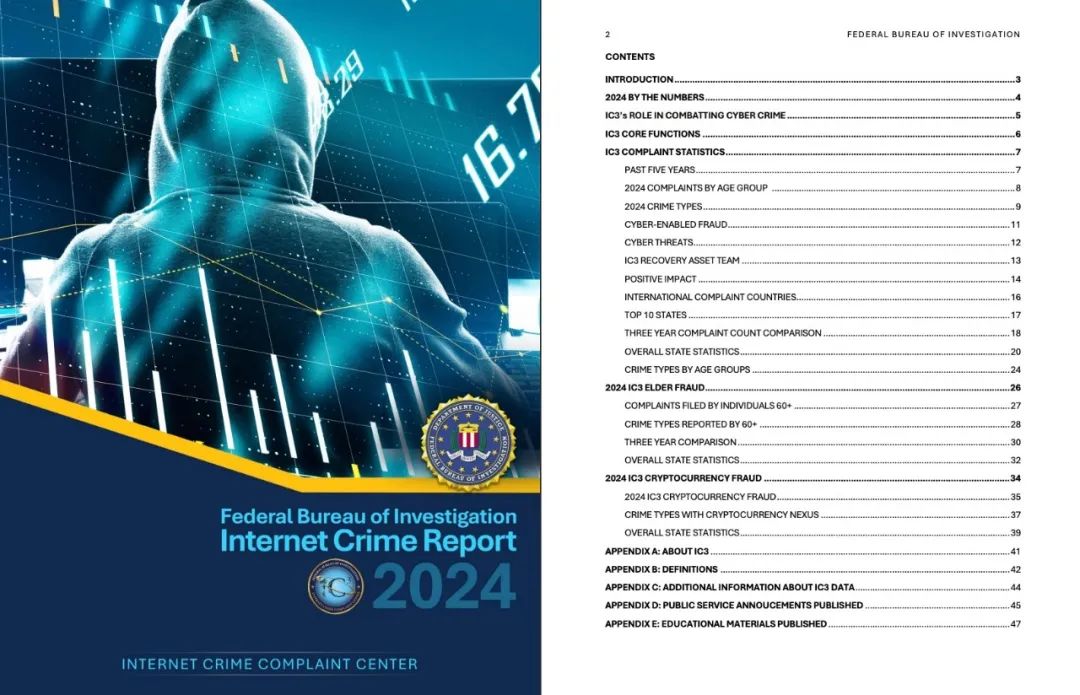
Key Point 1: Complaint Data in 2024
1. General Situation
In 2024, IC3 received a total of 859,532 complaints, resulting in actual losses of $16.6 billion, a 33% increase from 2023. Of these, 256,256 complaints involved actual financial losses, with an average loss of approximately $19,372 per incident. About 83% of the losses were caused by online fraud.
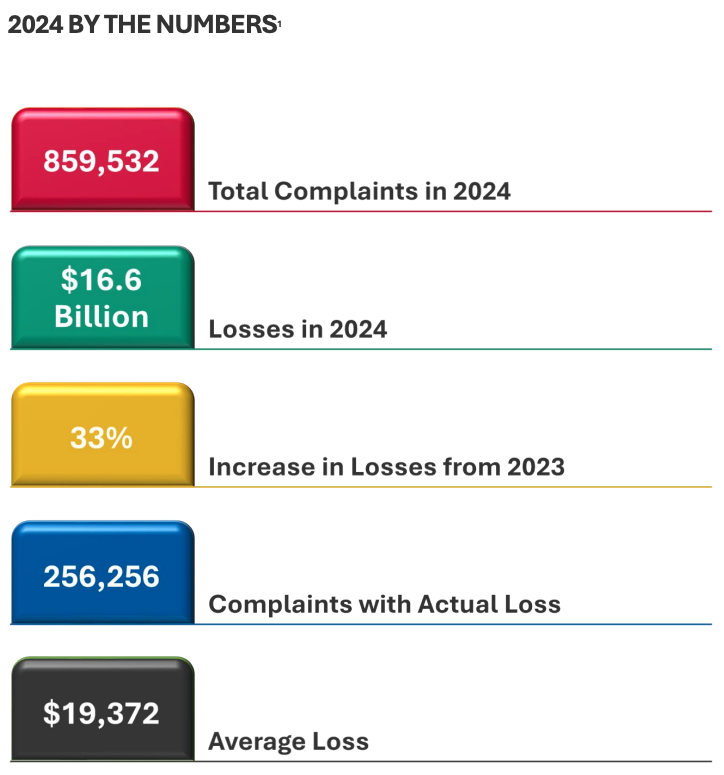
2. Cryptocurrency-related information
There were 149,686 cryptocurrency-related complaints, resulting in $9.3 billion in losses, a 66% year-on-year increase. Among the victims, those aged 60 and above accounted for the highest proportion.
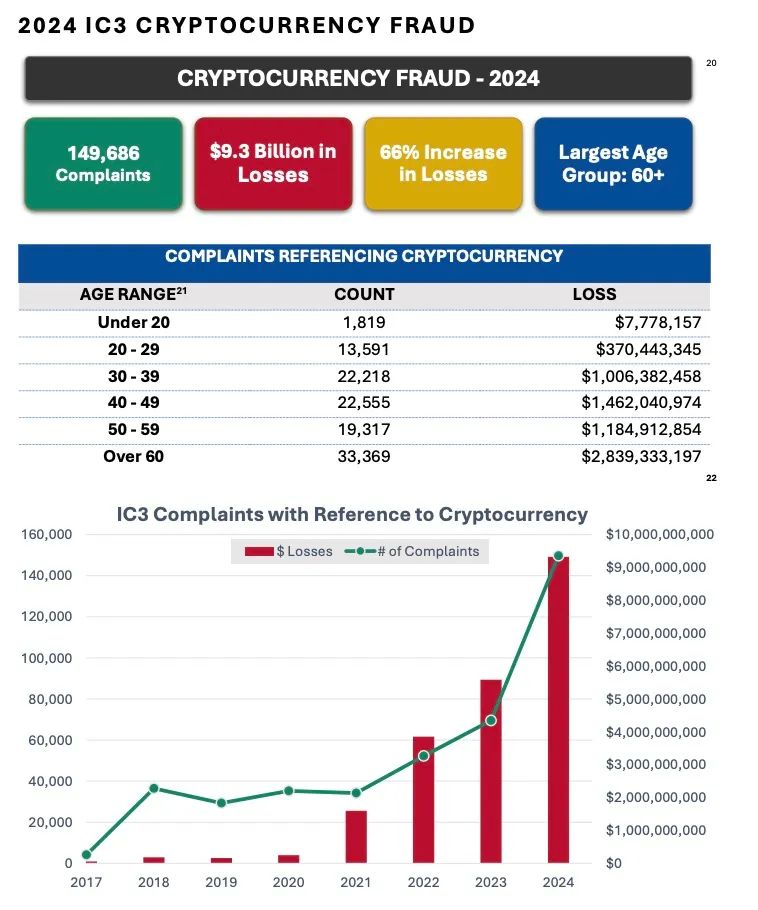
3. People aged 60 and above
This group filed 147,127 complaints and reported losses of $4.885 billion. The number of complaints increased by 46% year-on-year, and the amount of losses increased by 43% year-on-year. Among them, 7,500 people reported losses of more than $100,000, with an average loss of up to $83,000.
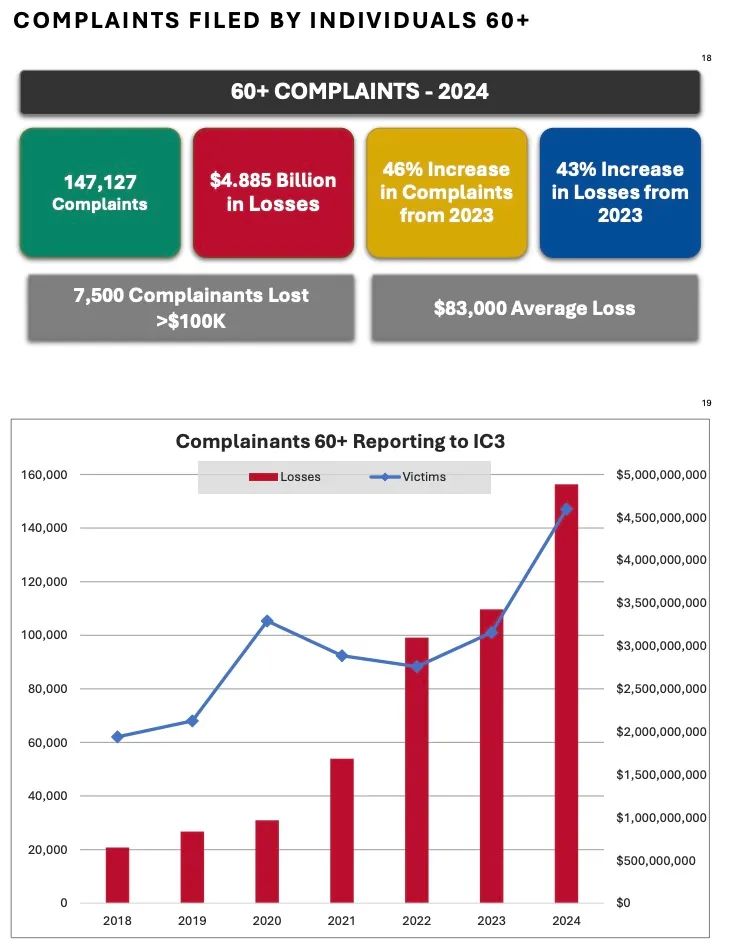
Key point 2: Analysis of victim groups
1. Overall age distribution
- Under 20: 17,993 complaints, $22.5 million in damages.
- Ages 20-29: 71,399 complaints, $540.1 million in losses.
- Ages 30-39: 108,899 complaints, $1.4 billion in losses.
- Ages 40-49: 112,755 complaints, $2.2 billion in losses.
- Ages 50-59: 84,540 complaints, $2.5 billion in losses.
- Ages 60 and older: 147,127 complaints, $4.8 billion in losses.
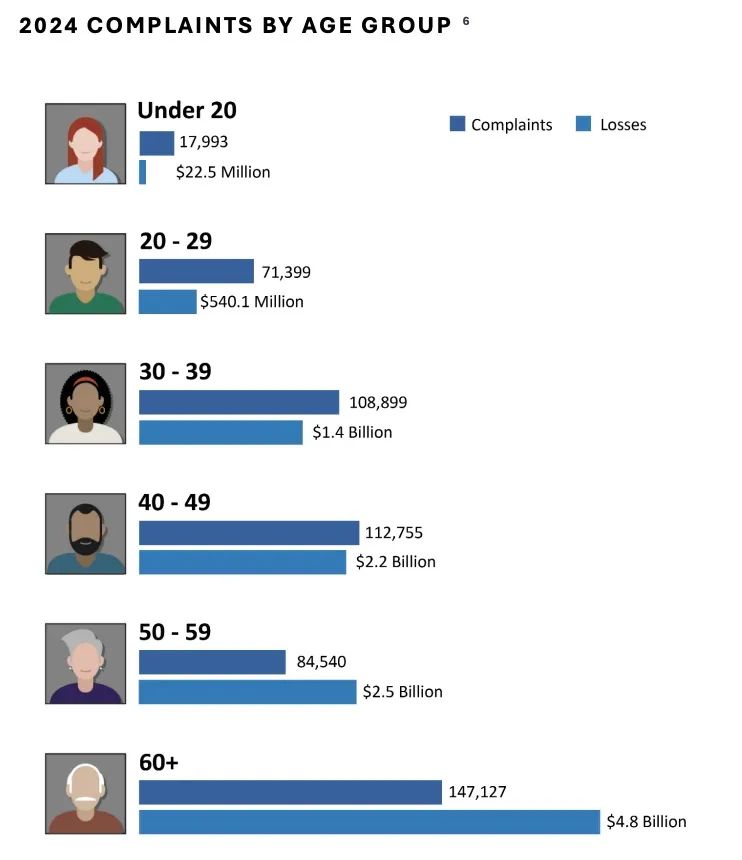
2. Cryptocurrency Victims
In cryptocurrency investment scams, people over 60 years old received the most complaints (8,043 cases), with losses of $1.6 billion, far exceeding other age groups. People over 60 years old have become the main target of scammers (2,674 cases, losses of $107,206,251) due to their lack of awareness of fraud prevention and unfamiliarity with new payment methods such as cryptocurrency ATMs. They are also the group with the most complaints in extortion/sex extortion (20,445 cases, losses of $724,288,735).
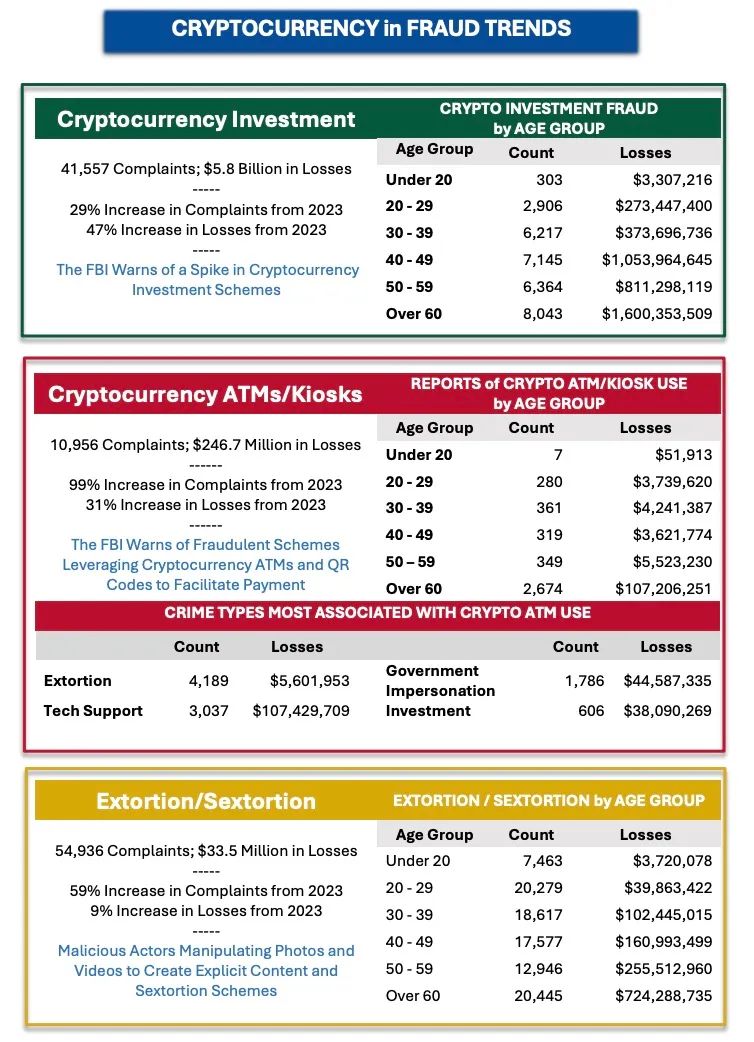
Key point 3: Crime type analysis
1. From the number of complaints
- Phishing/spoofing: 193,407.
- Ransomware: 86,415 cases.
- Personal data breaches: 64,882.
- Chargeback/failed transaction fraud: 49,572 cases.
- Investment scams: 47,919.
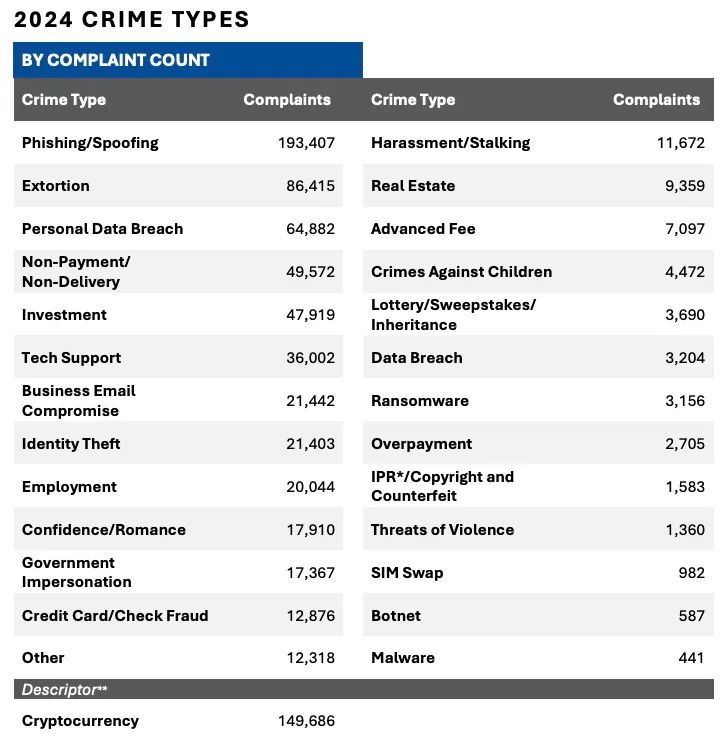
2. From the perspective of the amount of loss
- Investment fraud: $6.57 billion.
- Business Email Compromise (BEC): $2.77 billion.
- Tech support scams: $1.46 billion.
- Personal data breaches: $1.45 billion.
- Chargeback/failed transaction fraud: $785 million.
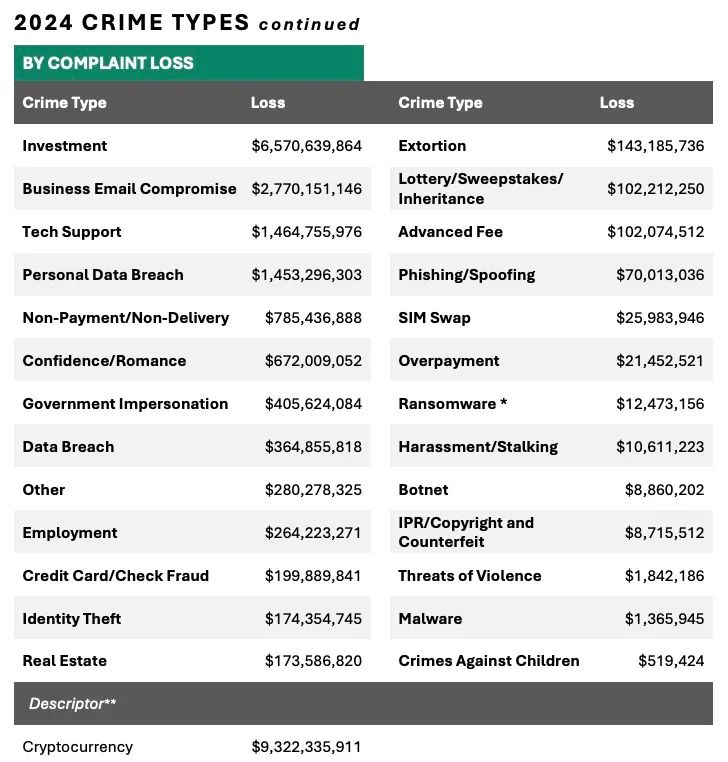
3. Cryptocurrency-related crimes
- Most complaints: extortion (47,054 cases), investment fraud (41,557 cases).
- Biggest losses: Investment fraud ($5.8 billion), personal data breaches ($1.1 billion).
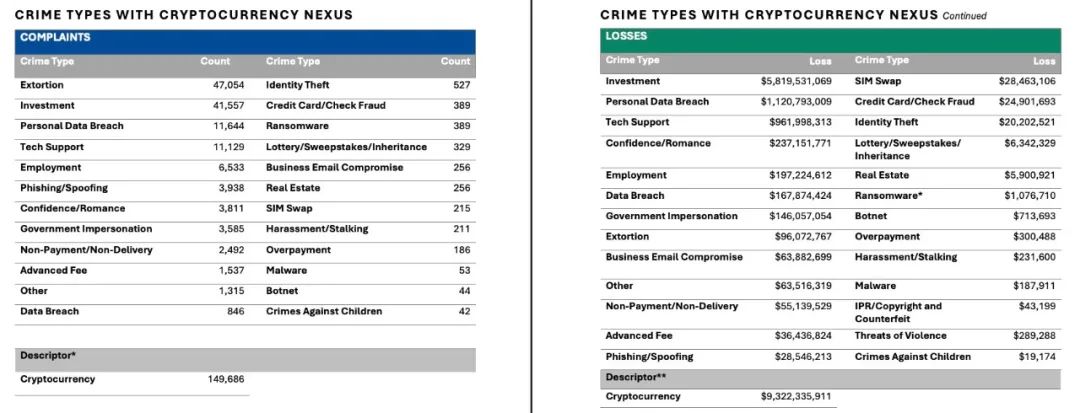
4. Main types of fraud encountered by people aged 60 and above
- The most complained scam types: phishing, technical support, extortion, personal data breaches, investment scams.
- The types of fraud that result in the most losses: investment fraud, technical support, emotional fraud, business email compromise (BEC), and personal data leaks.
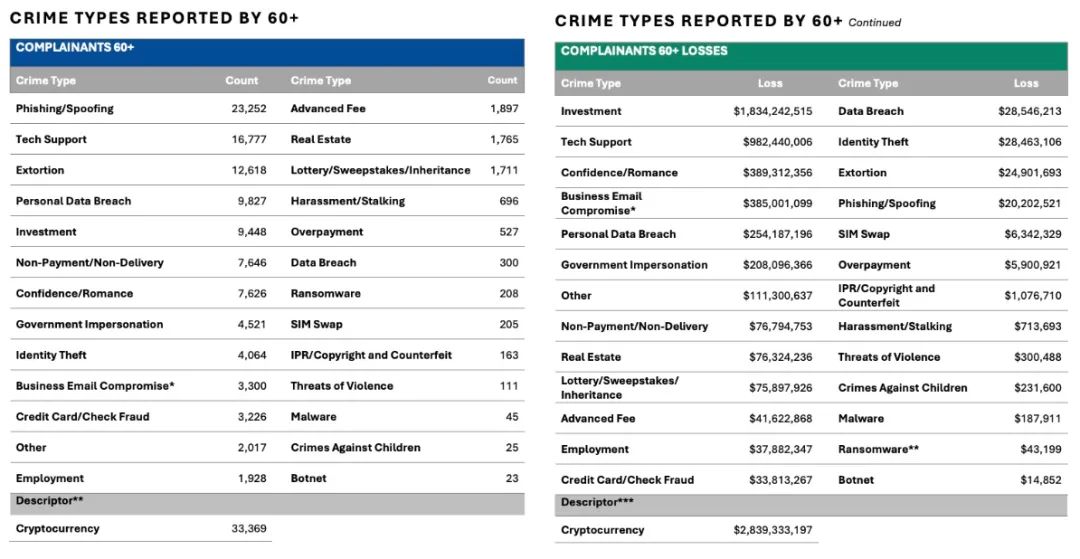
Key Point 4: Internet Fraud and Asset Recovery
1. Overall situation of online fraud
In 2024, IC3 received 333,981 online fraud complaints, resulting in $13.7 billion in losses, accounting for 83% of the total losses for the year. The main transaction methods include cryptocurrency, wire transfer, credit card payment, etc.
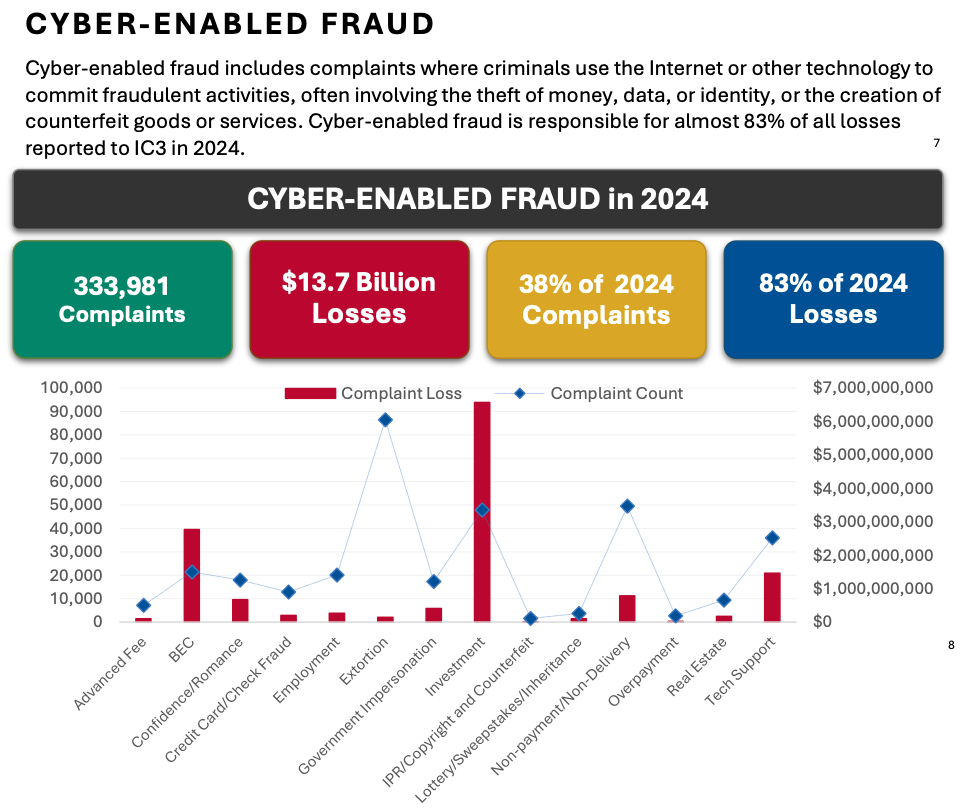
2. Typical fraud methods
- Call center fraud: 53,369 cases, $1.9 billion in losses.
- Emergency scams (impersonating relatives seeking help): 357 cases, with losses of $2.7 million.
- Toll road scams (SMS phishing): 59,271 cases, $129,000 in losses.
- Gold express scams: 525 cases, $219 million in losses.

3. Cyber threats
263,455 cyber threat-related complaints resulted in $1.571 billion in losses. Major ransomware variants include Akira, LockBit, RansomHub, FOG, and PLAY.
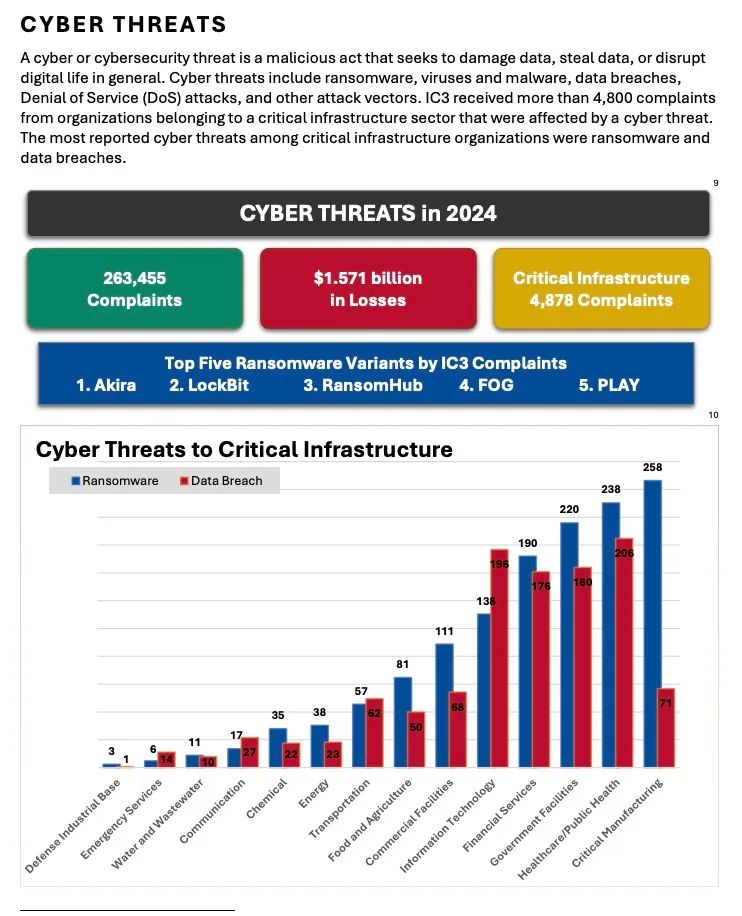
4. Asset recovery achievements
- The FFKC team processed a total of 3,020 freezing requests, froze $560 million in funds, and achieved a 66% recovery success rate.
- Operation Level Up successfully notified 4,323 crypto fraud victims, helping to recover approximately $285 million in potential losses.
- Partnered with Indian law enforcement to combat call center fraud, resulting in 215 arrests, a 700% year-over-year increase.
- In financial fraud projects, we successfully froze and recovered multiple large sums of money.
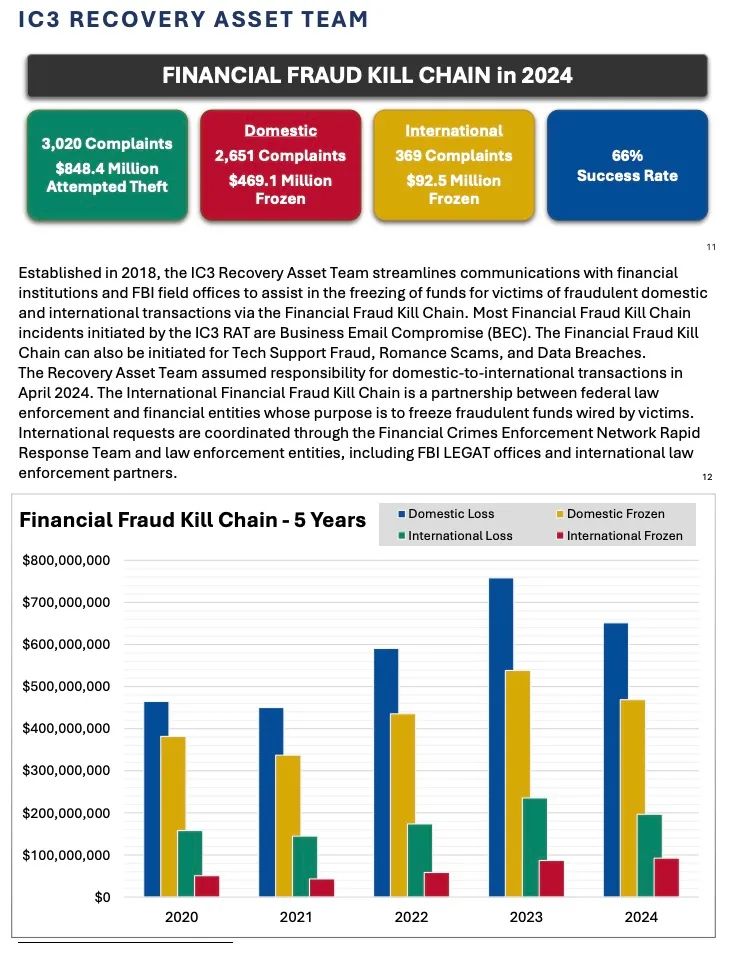
Key Point 5: Guard against cryptocurrency scams
In response to the current high incidence of crypto fraud, the FBI has put forward the following prevention suggestions:
- Be vigilant and avoid the temptation of high returns: high-yield, zero-risk investments are often scams.
- Verify the legitimacy of the trading platform: Use legitimate, regulated exchanges and avoid clicking on unknown links in social media ads.
- Avoid transferring money to strangers: Don’t trust “investment mentors” or “friends” you met online.
- Be wary of cryptocurrency ATM transactions: Scammers often ask victims to make payments through ATMs, so be vigilant.
- Use two-factor authentication (2FA): Enhance account security and prevent hackers from invading.
Summarize
The "2024 Cryptocurrency Fraud Report" released by the FBI reveals new trends in cybercrime in the current crypto asset environment: cryptocurrency-related cases have increased significantly, and the elderly group over 60 years old has become the main victims; fraud methods are highly professional and international. At the same time, cryptocurrency has become the preferred tool for criminals to launder money and transfer funds.
Although asset recovery and cross-border law enforcement cooperation have made some progress, judging from the overall scale of losses and growth trends, ordinary users still need to remain highly vigilant, effectively enhance security awareness, and avoid falling into various fraud traps. For governments and financial institutions, continued strengthening of international cooperation, regulatory enforcement, and tracking of capital flows will be key measures to curb cybercrime and improve combat efficiency.















